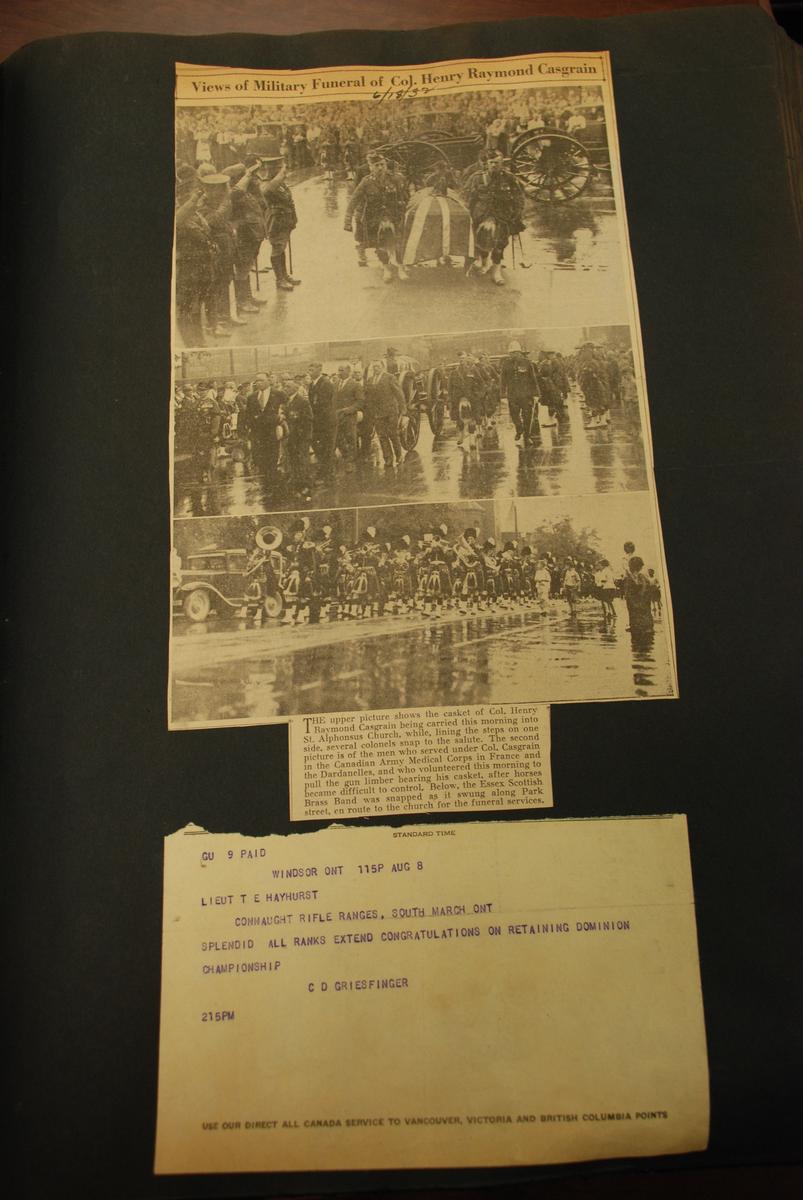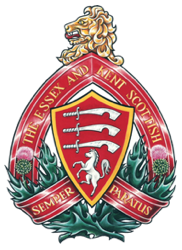Lieutenant-Colonel Henry Raymond Casgrain, M.D.

Black and gray photo of Lieutenant-Colonel Henry Raymond Casgrain, M.D.
The First World War (1914-1918) broke out in Europe in August 1914 after a prolonged period of international tension. Researcher Alexandra C. Istl noted that despite “months of rising international tension, most people and their governments had hoped for resolution and had failed to prepare.” The Canadian government relied on the planned strategy of Minister of Militia and Defence Sir Sam Hughes. Hughes cancelled the original plan of mobilization based on the existing militia structure and regiments and created several regionally-based numbered battalions with soldiers from various units. The government constructed a new camp in Valcartier, Quebec, to hold and train the new Canadian Expeditionary Force (CEF). The pervading feeling was that the war would be over by Christmas 1914.
The First Contingent of 32,000 soldiers sailed for Great Britain on 1 October 1914 and would spend many months in England reorganizing and training before being committed to battle in France in February 1915.
The Second Contingent began forming in October 1914 and soon were at the new camp in Valcartier. The 21st Regiment Essex Fusiliers from Windsor and the 24th Kent Regiment from Chatham, among many other militia units in Central Ontario, would each provide men to form the new 18th Battalion, CEF. Within the 21st Regiment Essex Fusiliers, Lieutenant-Colonel Henry Raymond Casgrain, M.D., held the position of a medical officer. Before WWI began, Casgrain was a successful physician and surgeon in Windsor, Ontario.
While two stationary hospitals were constructed in Valcartier, Quebec, an additional third field hospital was formed in London, Ontario. The third hospital was in a critical position to help mobilize Hughes’ plan to provide soldiers for the European war. Casgrain was the first Commanding Officer of the third field hospital in London, Ontario for a short period and did not go overseas with the hospital in August 1917. Prior to World War I, Casgrain had experience as a medical officer in a field hospital during the 1885 North West Rebellion.
As the Second Contingent was being recruited, Lieutenant-Colonel Casgrain, M.D., screened potential soldiers for the 18th Battalion. The ranks of the 18th Battalion were quickly filled once the word spread. The regimental history of The Essex and Kent Scottish Regiment noted that “word went out to the men of the 21st Regiment Essex Fusiliers by telephone and Abbot Ross, who had made sergeant four years after joining the Regiment was the first one in line the morning the recruiting began.”
Medical fitness was part of selection process, so Casgrain had responsibility to determine if the candidate was suitable for the rigors of war. Casgrain had the men line up naked and verified that they were fit for service. Sgt. Ross recalled that “Casgrain believed he looked so young, he asked if his mother knew where he was.” Such was the medical screening for World War One.
Casgrain had a respected role as the medical officer of the 21st Essex. In 1932, Casgrain died at the age of 75 years. On 18 June 1932, a military funeral was held for Casgrain. His casket was carried by the members of the Canadian Army Medical Corps who served under Casgrain, accompanied by the Essex Scottish Brass Band. Casgrain is buried at the St. Alphonsus Roman Catholic Cemetery, in Windsor, Ontario.
Story by Taylor Blackmere, Canada Summer Jobs 2022 Participant
with The Essex and Kent Scottish Regiment Association
Sources
- Duty Nobly Done, The History of The Essex and Kent Scottish Regiment by Sandy Antal and Kevin R. Shackleton, 2006.
- Colonel Henry Raymond Casgrain, Canadian Great War Project, February 26, 2009.
- A Study of Medical Volunteerism in the First World War by A.C. McAlister Istl VC, Western University, 2016.

Newspaper clipping from 18 June 1932 of the funeral of Lieutenant-Colonel Henry Raymond Casgrain, M.D.
